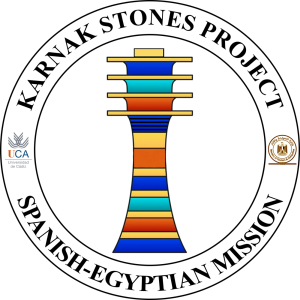In the world of archaeological conservation, technology has become an invaluable tool, and at
Karnak, 3D scanning and photogrammetry have revolutionized the way we document and preserve
the ancient stone blocks. These cutting-edge techniques allow us to create incredibly detailed and
accurate digital models of the blocks, capturing every nuance of their surface textures, intricate
carvings, and signs of weathering or damage. 3D scanning works by emitting laser beams that
measure the distance to the surface of the stone, creating a highly precise three-dimensional
representation of the block. This process records every detail, from subtle surface relief to more
pronounced features like cracks and carvings, at an unmatched level of accuracy. Photogrammetry
complements this by taking multiple photographs from various angles and using specialized software
to stitch them together into a 3D model. When combined, these methods provide a comprehensive
digital record of each block, preserving the current state of the stones in a way that traditional
documentation methods simply can’t match. One of the key advantages of these digital models is
their ability to preserve the blocks’ exact condition, even as the physical stones continue to degrade
due to natural wear or environmental conditions. Luxor’s extreme heat, sand, and UV radiation can
cause long-term damage to the stone, but these digital models act as a safeguard. By capturing a
detailed snapshot of the blocks as they are now, we ensure that future generations of scholars and
conservators have an accurate representation of the stones to reference, even if the original material
has changed or eroded over time. Furthermore, these 3D models open up exciting possibilities for
virtual reconstruction. If parts of the temple complex or blocks are missing or too fragile to study in
person, digital models allow us to virtually «rebuild» these elements, offering new insights into their
original form and placement within the site. It also enables us to share our results with other
researchers and the public, providing a global audience with access to Karnak’s wonders, no matter
their location. The integration of 3D scanning and photogrammetry into our conservation work isn’t
just about preserving the past; it’s about ensuring that the cultural heritage of Karnak continues to
inspire and educate for generations to come, with the help of the latest technology.
